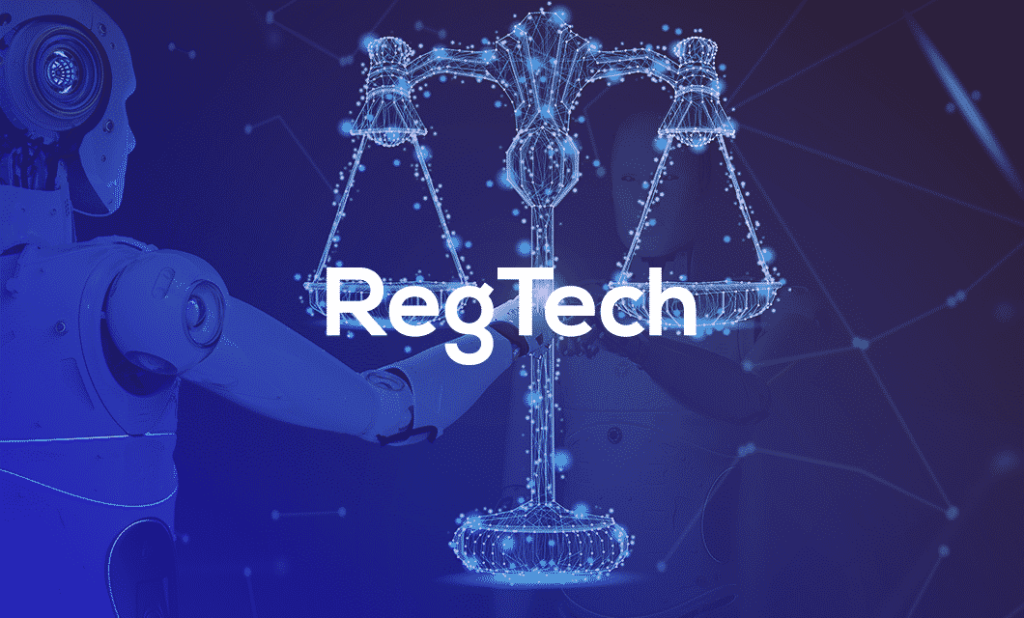Introduction to Tech Regulation
In the age of rapid technological advancement, the concept of tech regulation has become increasingly pertinent. As individuals and businesses continue to integrate technology into their everyday routines, the implications of this reliance necessitate a robust framework to manage various aspects of digital interactions. One of the primary reasons for implementing tech regulation is to ensure data privacy and safeguarding consumer rights amid a landscape where personal information is often vulnerable to exploitation.
Moreover, as technology permeates various sectors, from finance to healthcare, the need for algorithm transparency becomes crucial. Algorithms that dictate consumer experiences can sometimes operate without oversight, potentially fueling discrimination or misinformation. Therefore, regulations aim to enhance consumers’ understanding of how their data is being utilized, aligning technology’s development with ethical standards and accountability.
Simultaneously, tech regulation must strike a balance between protecting consumers and fostering innovation. By creating digital privacy laws, regulators can establish a framework that encourages companies to innovate responsibly. This allows for the growth of transformative technologies while ensuring that consumer protection remains a priority. The challenge lies in crafting regulations that are not overly burdensome, thereby dampening the entrepreneurial spirit and creativity that drives technological progress.
In addition, as technology evolves, the regulatory environment must adapt to address newly emerging challenges. For instance, the proliferation of misleading content highlights the importance of effective content moderation frameworks. Regulatory bodies are tasked with developing guidelines that not only combat harmful content but also promote the responsible use of technology. The intersection of these elements—data privacy, algorithm transparency, and consumer protection—forms the foundation of contemporary tech regulation. By addressing these issues, society can harness the advantages of technology while minimizing its risks.
The Historical Context of Tech Regulation
The evolution of tech regulation is intricately linked to the rapid advancements in technology itself. From the late 20th century, as the internet began reshaping communication and commerce, regulatory frameworks struggled to keep pace with innovations. Early regulatory efforts were primarily reactive, addressing concerns like consumer protection, data privacy, and the misleading practices of tech firms. The Telecommunications Act of 1996 marked one of the first instances of comprehensive legislation aimed at regulating the burgeoning internet landscape and telecommunications industry. This act aimed to foster competition and innovation but also exposed gaps in consumer protections and safeguards against misuse of data.
As technology continued to advance into the 21st century, new challenges emerged, prompting more targeted regulations. The Federal Trade Commission (FTC) was increasingly called upon to enforce digital privacy laws, addressing data breaches and unauthorized use of consumer data. The enactment of pivotal regulations, such as the General Data Protection Regulation (GDPR) in Europe in 2018, set globally recognized standards for data privacy, emphasizing the importance of algorithm transparency and consumer rights in digital spaces. This shift highlighted the necessity for proactive measures in safeguarding individual rights against potential exploitation by tech giants.
Moreover, historical case studies, such as the landmark Microsoft antitrust case in the late 1990s, exemplify the complexities regulators face in balancing innovation with consumer protection. The case raised crucial questions about market dominance, competition, and the ethical standards tech companies should uphold. As technological advancements present ever-evolving challenges, the constant reassessment of regulatory approaches becomes essential. The dynamic nature of technology necessitates an adaptive regulatory environment that prioritizes data privacy and ensures accountability, thereby aligning the interests of consumers, businesses, and society at large.

Key Areas of Tech Regulation
The landscape of tech regulation encompasses several critical areas that seek to address the unique challenges posed by the digital domain. Among these, data privacy has emerged as a paramount concern, given the increasing volume of personal information shared online. Governments around the world are establishing digital privacy laws aimed at safeguarding consumer data from misuse. Regulations such as the General Data Protection Regulation (GDPR) in Europe have set high standards for organizations regarding consent, data access, and breach notification, thus influencing global practices in data management.
Cybersecurity is another vital focus area in tech regulation. As cyber threats evolve, policymakers are responding with regulations mandating enhanced security measures for organizations handling sensitive information. The implications for tech companies are significant; they must invest in robust cybersecurity frameworks to ensure compliance and protect consumer trust. This not only involves adhering to existing laws but also requires ongoing assessments of vulnerability and the implementation of best practices to mitigate risks.
Content moderation has gained considerable attention, particularly in the wake of misinformation and harmful content proliferating on social media platforms. Regulatory bodies are increasingly scrutinizing the practices of tech companies regarding the management of user-generated content. This includes evaluating how algorithms determine what content is visible and ensuring that moderation processes are fair, transparent, and accountable. Algorithm transparency is crucial, as it empowers consumers to understand how decisions about content dissemination are made, ultimately fostering a healthier online discourse.
Lastly, antitrust issues represent a significant area of focus, with regulators examining the competitive practices of major tech firms. These inquiries seek to address concerns about monopolistic behaviors that may stifle competition and innovation. By enforcing rules that encourage fair competition, regulators aim to protect consumers and ensure a diverse marketplace where various tech services can thrive.
Global Perspectives on Tech Regulation
The regulation of technology is a global concern, with varying approaches shaped by distinct cultural, political, and economic contexts. In Europe, the General Data Protection Regulation (GDPR) serves as a landmark framework that emphasizes data privacy and consumer protection, granting individuals enhanced rights over their personal information. The GDPR sets a high standard for data privacy, mandating that organizations implement robust measures to ensure algorithm transparency and responsible content moderation practices. This regulation reflects the European commitment to safeguarding individual rights in the digital age, prioritizing user privacy as a central tenet of tech policy.
In contrast, the regulatory landscape in the United States is characterized by a more fragmented, sectoral approach. U.S. regulations are developed on an industry-by-industry basis rather than through a comprehensive privacy law akin to the GDPR. This results in significant variations in the application of digital privacy laws, allowing for greater flexibility but often leading to inconsistencies in consumer protection. As a consequence, tech companies face challenges navigating a patchwork of regulations across states and sectors, raising concerns about accountability, algorithm transparency, and effective content moderation practices.
Meanwhile, regions such as Asia-Pacific and Latin America are carving out their own regulatory frameworks, influenced by local political dynamics and economic priorities. In Asia, countries like China have adopted stringent regulations aimed at data sovereignty and national security, enforcing strict controls over digital platforms. Conversely, Latin American nations are increasingly recognizing the importance of data privacy, with countries like Brazil implementing their data protection law inspired by the GDPR. These diverse approaches highlight the varying priorities and philosophies underpinning tech regulation worldwide, emphasizing the need for a balanced method that respects local cultures and global standards.
Challenges in Tech Regulation
The rapid advancement of technology presents significant challenges for regulators tasked with maintaining a balance between consumer protection and innovation. One of the primary issues facing tech regulation is the pace of technological innovation itself. As new technologies emerge, they often outstrip the existing legal frameworks designed to manage their implications on data privacy and consumer rights. This lag in regulatory response can result in gaps that may leave consumers vulnerable to risks associated with inadequate safeguards for digital privacy.
Moreover, the inherently cross-border nature of the internet complicates regulatory efforts. Digital platforms operate globally, making it difficult for individual countries to enforce regulations effectively. Different jurisdictions possess varying digital privacy laws, potentially leading to a fragmented regulatory environment that can confuse consumers and hinder compliance efforts by tech companies. This lack of uniformity can inhibit effective content moderation since platforms may have disparate rules across regions, resulting in inconsistencies that affect users’ online experiences.
Another pressing concern is the potential for over-regulation, which could stifle innovation and disrupt the competitive landscape. Striking a balance is essential, as excessive regulatory burdens could deter startups and small businesses from emerging, thereby reducing diversity and competition within the tech sector. Furthermore, the current legal frameworks often struggle to address the complexities brought about by technologies such as artificial intelligence and blockchain, which continue to evolve rapidly. As regulators grapple with these challenges, the push for algorithm transparency becomes increasingly critical, ensuring that consumers are informed and can trust automated decisions impacting their lives. Ultimately, addressing these challenges requires a nuanced understanding of technology and a commitment to evolving regulatory approaches that prioritize both consumer protection and innovation.

The Role of Stakeholders in Shaping Tech Regulation
As the landscape of technology continues to evolve, a diverse array of stakeholders plays a crucial role in shaping regulations that govern the industry. Among these stakeholders, governments hold significant authority as they establish laws to ensure consumer protection and enforce digital privacy laws. Their primary interest lies in safeguarding the public while facilitating innovation. Governments often find themselves in a complex negotiation process between encouraging technological advancement and establishing necessary frameworks to uphold data privacy and security.
Tech companies, on the other hand, are key players with a vested interest in crafting regulations that align with their business models. These organizations are frequently at the forefront of discussing algorithm transparency and content moderation policies. Their primary goal is often to maintain operational flexibility while ensuring compliance with emerging regulations, which can sometimes lead to friction with regulatory bodies. They advocate for legislation that reflects industry capabilities and helps shape the legal context in which they operate. This engagement is vital, as it influences how data privacy and transparency are implemented within a competitive market.
Advocacy groups and consumer protection organizations serve as essential watchdogs, representing the interests of individual citizens and communities. These groups work to promote ethical practices in technology and demand greater accountability from both tech companies and governments. They address issues like data privacy breaches and the need for more rigorous consumer protections. These stakeholders frequently push for stronger digital privacy laws and call for more robust oversight of tech practices, striving to create a balance between industry interests and public safety concerns.
Lastly, consumers are pivotal in this regulatory landscape. As the end-users of technology and its applications, they influence market dynamics through their usage patterns and feedback. The interactions among these stakeholders illustrate both collaborative efforts to advance tech regulation and tensions that arise from competing interests. In conclusion, the multifaceted roles of stakeholders are vital for navigating the complexities of tech regulation, fostering an environment that prioritizes innovation, transparency, and consumer rights.
Technological Solutions for Regulatory Compliance
In an era marked by rapid technological advancement, businesses are increasingly turning to innovative solutions to navigate the complex landscape of regulatory compliance. AI-driven compliance tools have emerged as a front-runner in this pursuit, providing organizations with the ability to monitor and manage their compliance with various digital privacy laws efficiently. These tools utilize machine learning algorithms to analyze data and flag potential non-compliance issues, thereby enhancing data privacy and consumer protection. The automation of compliance processes not only boosts operational efficiency but also minimizes the risk of human error in adhering to regulations.
Another promising technological solution is the implementation of blockchain technology, which offers enhanced transparency in transactions. Through a decentralized ledger system, blockchain facilitates a high level of accountability, enabling organizations to track and verify transactions with unprecedented accuracy. This solution holds particular significance for companies that must comply with stringent data privacy regulations, as blockchain can provide a clear audit trail for personal data usage, ensuring that organizations uphold their commitments to consumer protection and algorithm transparency.
Furthermore, data anonymization technologies play a crucial role in compliance efforts. By systematically removing personal identifiers from datasets, these technologies help organizations utilize data for analytics while adhering to privacy laws. The application of such methodologies not only reduces the risk of data breaches but also enhances trust among consumers regarding how their data is managed. Nevertheless, reliance on these technological solutions is not without its pitfalls. Issues such as reliance on outdated algorithms, the potential for data biases, and challenges in maintaining up-to-date knowledge on evolving regulations can undermine the efficacy of these innovations. Hence, while technology undoubtedly presents valuable tools for regulatory compliance, organizations must tread carefully and remain vigilant to ensure full adherence to all data privacy standards.
Future Trends in Tech Regulation
The landscape of tech regulation is poised for significant evolution as advancements in artificial intelligence (AI), machine learning, and big data continue to accelerate. Emerging trends indicate that regulatory bodies will focus on establishing frameworks that ensure algorithm transparency, fortify data privacy, and enhance consumer protection. Given the increasing integration of these technologies into everyday life, regulations will likely seek to mitigate potential risks associated with data misuse and infringement upon individual privacy rights.
One anticipated trend is the development of comprehensive digital privacy laws that govern how companies manage and utilize consumer data. These regulations will aim to provide users with greater control over their information and ensure that businesses are held accountable for data breaches and privacy violations. In this context, organizations must prioritize data privacy compliance as a fundamental aspect of their operational strategy. Failure to adapt to evolving regulations could result in significant legal repercussions and loss of consumer trust.
Public sentiment and advocacy will play a crucial role in shaping future regulatory frameworks. As citizens become more aware of and concerned about issues related to algorithm transparency and data protection, there will be increased pressure on policymakers to respond effectively. Advocacy groups are likely to continue raising awareness about the ethical implications of AI and big data usage, prompting lawmakers to consider public opinion as a guiding factor in developing tech regulations.
To navigate these impending challenges, businesses should proactively adapt to anticipated regulatory environments by investing in compliance technologies and practices. Implementing robust content moderation strategies and engaging in transparent data handling practices will not only align with regulatory expectations but also enhance brand reputation. By embracing these aspects of regulation, organizations can turn potential challenges into opportunities for growth and consumer loyalty.

Conclusion and Call to Action
The intricate interplay between technology and regulation has become paramount in today’s digital landscape. As we have explored, the emergence of data privacy concerns, algorithm transparency, and content moderation practices necessitates an ongoing dialogue among stakeholders. This dialogue must encompass policymakers, corporations, and consumers to establish robust frameworks that uphold consumer protection while fostering innovation.
Data privacy, a cornerstone of contemporary digital interactions, directly impacts how personal information is managed and safeguarded. Striking a balance between the advancement of technology and the enforcement of digital privacy laws remains a formidable challenge. These regulations should not only protect individual rights but also encourage companies to innovate responsibly, ensuring that their algorithms operate transparently and ethically. In light of increasing scrutiny over data practices, it is essential for organizations to prioritize transparency and accountability within their operations.
Moreover, the need for effective content moderation practices cannot be overstated. As digital platforms continue to expand their reach, their responsibilities grow concomitantly. Ensuring that appropriate safeguards are in place to manage harmful content while acknowledging freedom of expression is a tightrope walk that requires thoughtful regulation. It is incumbent upon stakeholders to engage in these discussions proactively, advocating for standards and practices that resonate with public interest.
Ultimately, the path forward demands collective action. As technology evolves, so too must our approaches to regulation. We encourage policymakers to collaborate with industry leaders and civil society to devise balanced solutions that can adapt to future challenges. For consumers, understanding their rights under emerging digital privacy laws is vital. Engagement in these conversations is necessary to ensure a regulated tech environment that protects public interests while fostering an innovative atmosphere.